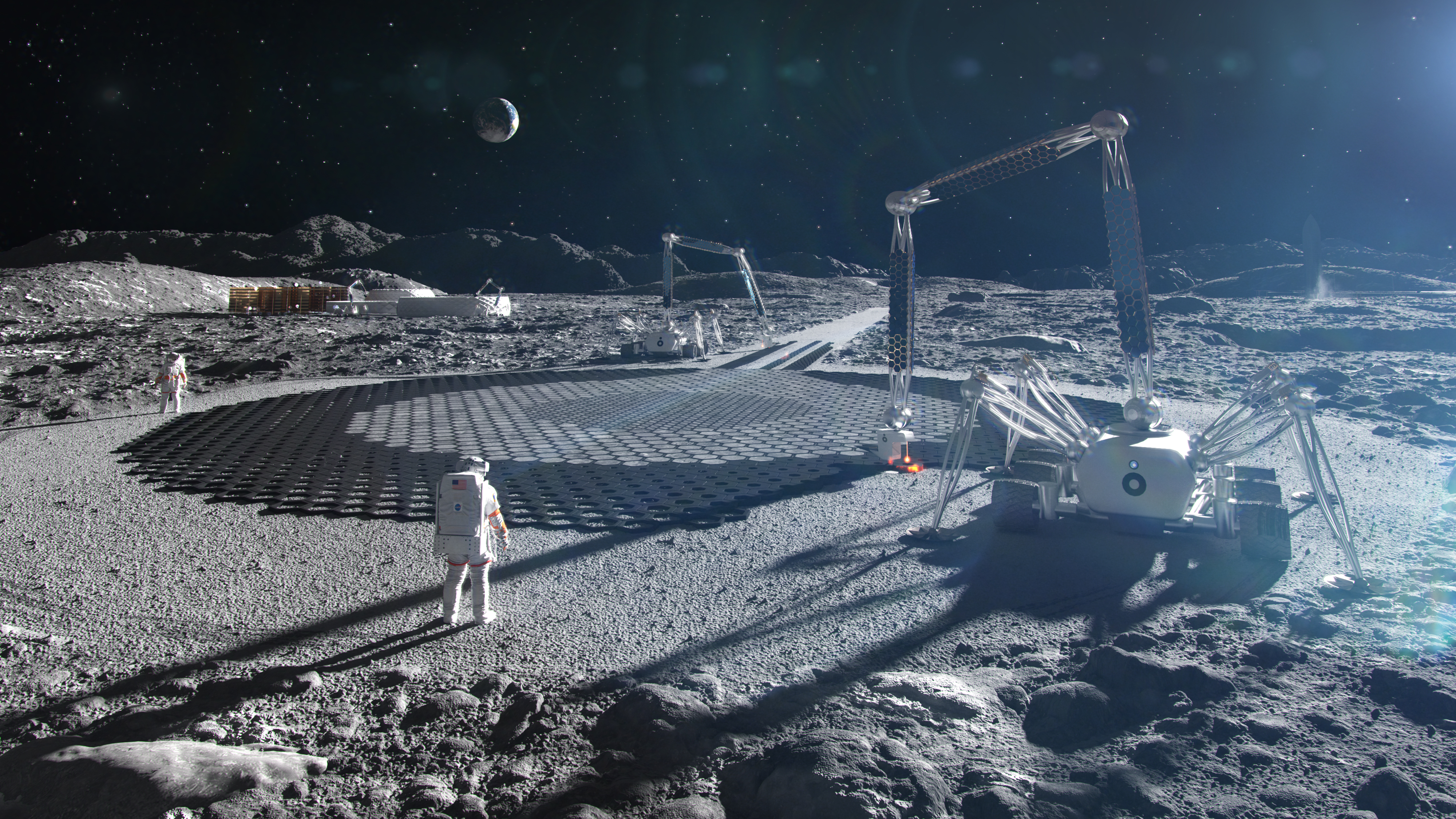Building on the moon: NASA awards Texas company $57 million for lunar construction system

A nascent off-Earth construction system just got a big funding boost.
NASA has awarded the Texas-based company ICON $57.2 million for its Project Olympus, which is working to develop technology that will allow humanity to build outposts on the moon and Mars using locally available dirt and rock.
"To change the space exploration paradigm from 'there and back again' to 'there to stay,' we're going to need robust, resilient and broadly capable systems that can use the local resources of the moon and other planetary bodies," ICON co-founder and CEO Jason Ballard said in a statement today (Nov. 29).
"We're pleased that our research and engineering to date has demonstrated that such systems are indeed possible, and we look forward to now making that possibility a reality," he added.
Related: What would it be like to live on the moon?

ICON is a pioneer in the use of advanced construction technologies here on Earth. For example, the company built the first-ever fully permitted 3D-printed home in the United States in 2018 and has since delivered entire communities of such houses in the U.S. and in Mexico.
The company launched Project Olympus in 2020, reasoning that its tech could help build critical infrastructure like landing pads, roads and habitats on the moon and Mars. ICON has already produced a prototype of sorts — a simulated 3D-printed Red Planet habitat called Mars Dune Alpha, which NASA will use to train astronauts for long-duration missions.
Breaking space news, the latest updates on rocket launches, skywatching events and more!
The newly announced NASA contract, granted via the agency's Small Business Innovation Research program, will help the company mature its tech and procedures. ICON plans to use the money to learn how lunar soil, or regolith, behaves in lunar gravity using simulated samples and real ones brought back by the Apollo missions, company representatives said.
The company will also test its hardware and software on a space mission that simulates lunar gravity. And there will be an even more ambitious trial, if all goes according to plan.
"The final deliverable of this contract will be humanity's first construction on another world, and that is going to be a pretty special achievement," Ballard said in the statement. (He did not go into further detail.)
NASA's interest in lunar construction systems is no surprise; through its Artemis program, the space agency is working to establish a sustainable, long-term human presence on and around the moon by the end of the 2020s.
The first Artemis mission, Artemis 1, launched on Nov. 16, sending an uncrewed Orion capsule to lunar orbit. Orion is due to return to Earth with an ocean splashdown on Dec. 11.
"In order to explore other worlds, we need innovative new technologies adapted to those environments and our exploration needs," Niki Werkheiser, director of technology maturation in NASA's Space Technology Mission Directorate, said in the same statement. "Pushing this development forward with our commercial partners will create the capabilities we need for future missions."
Mike Wall is the author of "Out There" (Grand Central Publishing, 2018; illustrated by Karl Tate), a book about the search for alien life. Follow him on Twitter @michaeldwall. Follow us on Twitter @Spacedotcom or on Facebook.

Michael Wall is a Senior Space Writer with Space.com and joined the team in 2010. He primarily covers exoplanets, spaceflight and military space, but has been known to dabble in the space art beat. His book about the search for alien life, "Out There," was published on Nov. 13, 2018. Before becoming a science writer, Michael worked as a herpetologist and wildlife biologist. He has a Ph.D. in evolutionary biology from the University of Sydney, Australia, a bachelor's degree from the University of Arizona, and a graduate certificate in science writing from the University of California, Santa Cruz. To find out what his latest project is, you can follow Michael on Twitter.
